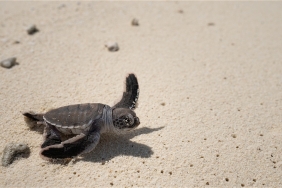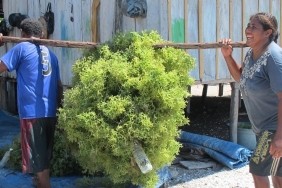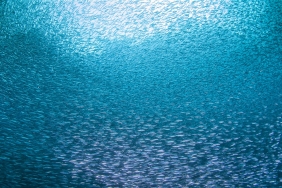LET'S GET TO KNOW THE TUNA FISHING GEAR AT SENDANG BIRU
By: Zainul Arifin (Capture Fisheries Assistant for Tuna Fisherman Community Engagement WWF-Indonesia)
Sendang Biru, known as the best handline tuna producing area in Indonesia, is located at the southern tip of Malang Regency. This is not the first time that WWF-Indonesia has visited the location that is famous for its tuna potential. On April 14-15, in order to record the boats in unloading the catch at the Pondodkdadap Beach Fishing Port, Sendang Biru, I, representing WWF-Indonesia, came to visit again. With the aim of getting to know the tuna fishing gear in Sendang Biru, I found out by interviewing the lifeboat fishermen around the pier.
Actually, the interview about tuna fishing gear I did spontaneously. Seeing the crew preparing the fishing gear before going to sea is an interesting thing. There are two important points of activities carried out by WWF-Indonesia in the Sendang Biru area, namely taking the need for supporting data to strengthen the analysis towards FAD-based tuna management in this longline fishing gear, especially on the lifeboat and instilling ideas and understanding in the test chain regarding the proposed FAD-based quota and catch.
Multiplicity of Sendang Biru Tuna Fishing Gear
On April 14, just like the previous routine at Sendang Biru, I rushed to the dock to take notes. I didn't have much luggage, just a file of questions for the boat fishermen who were preparing their fishing gear next to the boat that had just unloaded their catch. There were many things I wanted to ask to complete the data needed for this tuna research. Without hesitation, I approached the fishermen and conducted interviews.
Mr. Suratin, the security guard of Sendang Biru Village Unit Cooperative (KUD), invited me to go on board Sinar Jaya 05 to meet Mr. Rusdy, the captain, and other crew members including Mr. Darwis. While on board, we discussed the handline used in catching tuna. The atmosphere of the discussion was relaxed with laughter interspersed with the crew until finally I said goodbye to go home to compile the results of a brief discussion of the results of the unloading of the ship.
My desire to get to know tuna fishing gear in Sendang Biru led me to the next meeting. The next day I planned to visit the fishermen in the same place, but on the way Mr. Darwis, offered me to continue yesterday's discussion at his house. I gladly accepted.
From Mr. Darwis' explanation, it is known that there are eight forms and names of tuna fishing gear used in Sendang Biru, namely
- Rinta fishing, used at night using a lamp, moved up and down to get baby tuna and flying fish.
- Tabir fishing rod, this fishing rod is almost the same as Rinta fishing rod. It is only used in the morning to catch baby tuna, skipjack, tuna and small fish.
- Tabir Fishing Rod.
- Pasesek Pagi, used to catch baby tuna, skipjack, tongkol and small fish that will be used as live fish bait in catching big tuna.
- Pasesek Blereng, used to catch big tuna such as yellowfin tuna and marlin.
- Handheld Rocks, used to catch big fish such as Yellowfin Tuna or Albacor along with marlin.
- Rock, same as hold rock, but does not rule out the possibility of catching small fish.
- Tomba rocks, also used to catch big fish such as Yellowfin Tuna or Albacor along with marlin, but still can catch small fish.
- Tonda-Tonda, a fishing rod used during the boat run is used as a live bait or to get baby tuna, skipjack and tuna.
All eight have different specifications and ways of use. The various forms and uses of tuna fishing gear added to my knowledge of fisheries practices in Sendang Biru. And there are still many other innovations both in terms of bait and the form of fishing gear depending on the habits of fishermen and their origin. The hope is that fisheries practices in Sendang Biru remain environmentally friendly, strengthened by fishermen's compliance with existing regulations so that ecological harmonization can be created.





